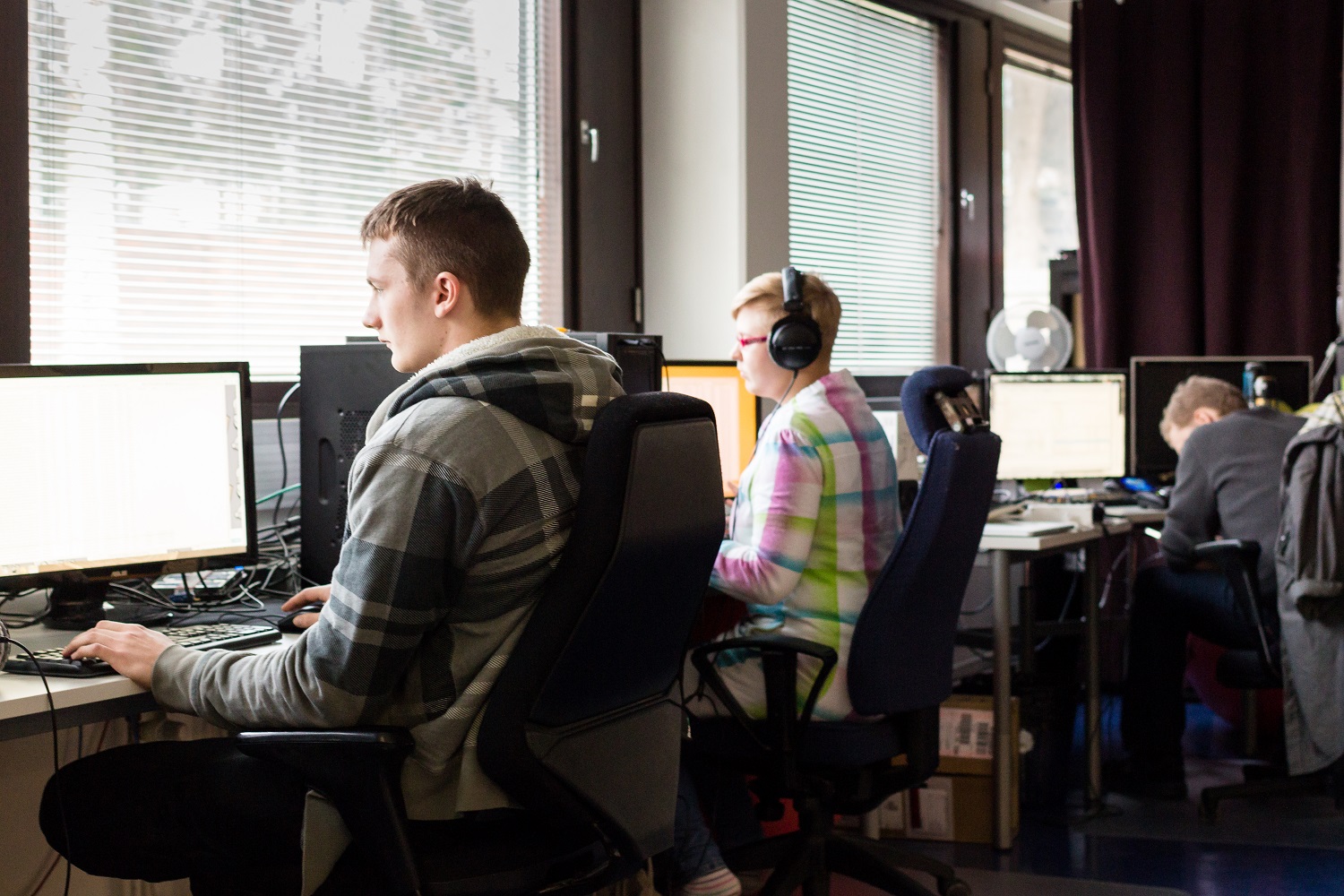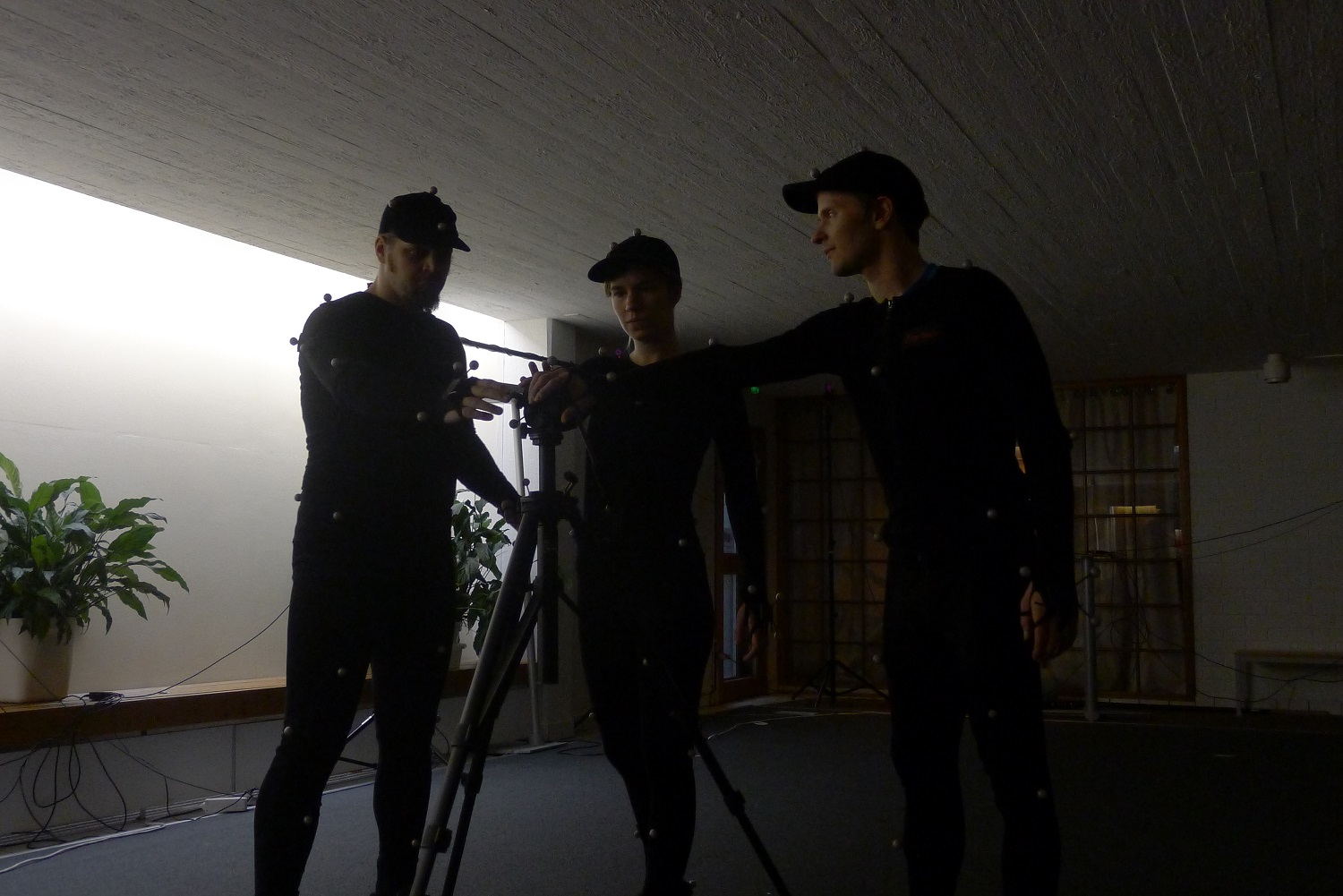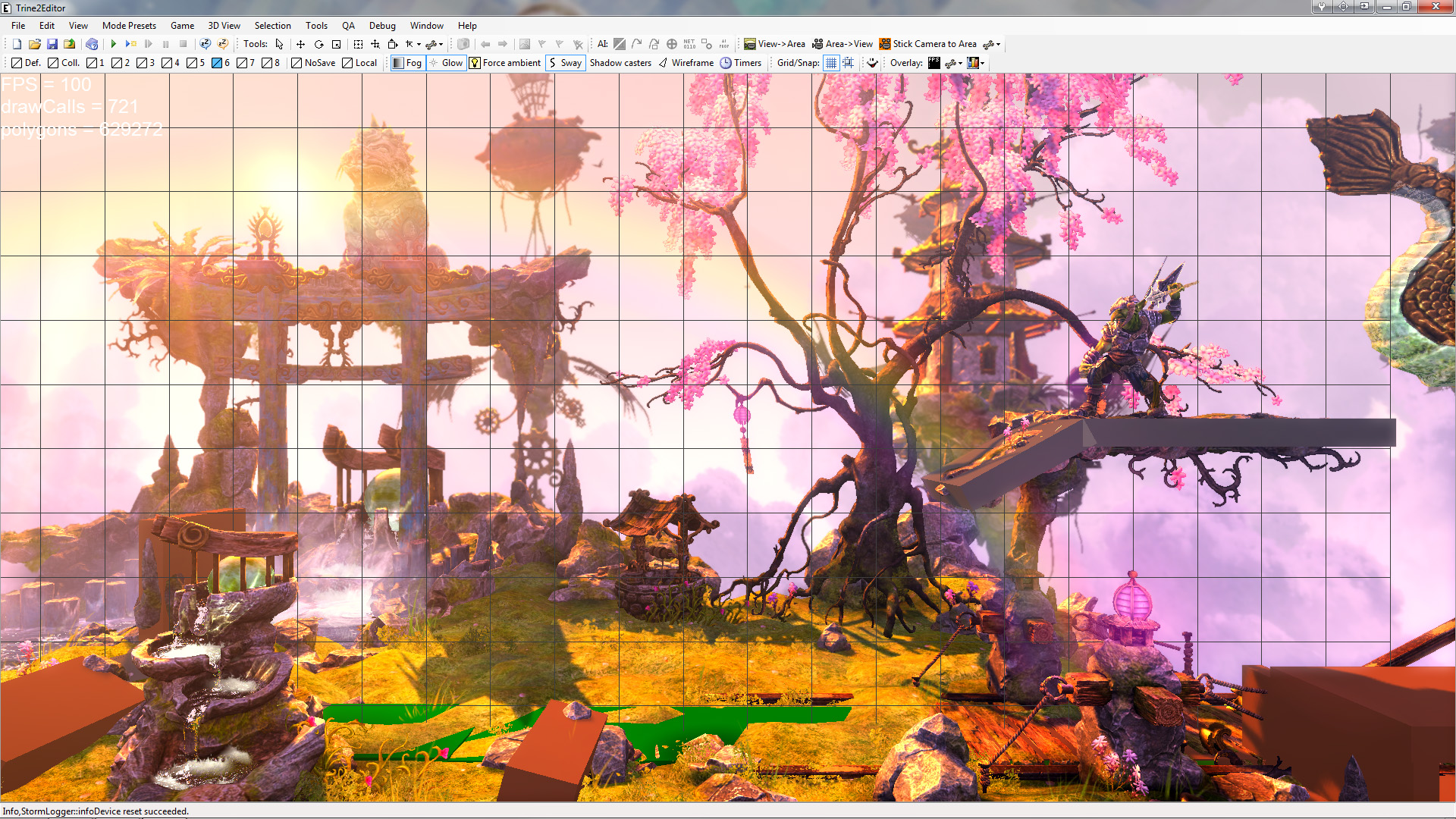Some time ago we wrote about what it’s like to work in Frozenbyte QA and now it’s time to do the same for our Design team. In the last post we gave you the chance to ask questions from them and now we’ve picked some of your questions and had a few of our Design team members answer them.
You’ll find the questions and answers at the end of this post, but first let’s talk a bit about game design. 🙂
“It would be easier to answer what is not game design”, one of our designers said when we asked him to summarize what game design is. Game Design is a vast, vast world with countless of aspects to take into consideration. A designer needs to be able to think of the big picture and manage to keep that picture in mind even while the game is still incomplete (and it’s always incomplete until it’s released). Imagination and great ideas are nice, but they alone are not enough – a designer needs to be able to picture and create working executions for those ideas and make sure they fit well into the final game.
Design work at Frozenbyte is roughly divided to game design, level design, writing, UI design, technical level work and focus user testing and most of our designers are specialized in one of these categories – though game design is still done by pretty much everyone, and level design by most of the team.
Our Design team works closely with our artists both before starting a project and during it. Decisions such as level themes and settings are decided together, but the actual level art and all artistic choices are made by level artists. We feel that having separate level designers and level artists is the best way to go, since this allows both parties to focus completely on their own specialisation.

Our Design team is currently super busy with Trine 3 and other things, so it’s been quite hard to get them to stay still for pics without being in their way. So this picture of our QA at work from last spring will have to do for now – it’s easy to pretend they’re Design, they’re right next to each other so that makes them Design by proxy, no?
Even though we have many game projects going on simultaneously, most of our designers are dedicated to a certain project. There are still some designers who may jump from one project to another, but this goes only for those who work mainly on documentation, focus user tests or GUI design, which are typically not something that happens daily or even weekly – this makes it relatively easy for designers to keep their focus on one project at a time.
One could write a book on what Game Design is (and in fact, several have been written), but that’s not really the purpose of this blog post, so let’s move on to your questions and give the stage to our wonderful Designers. 🙂
If you still have questions to our Designers that weren’t answered in this post, you can post more questions in the comments. We can’t promise to answer every question, but we’ll at least try to get them to the designer’s attention!
The below questions are answered by four members of our design team – including a Junior Designer (JD), Focus User Tester (FT), Level Design Lead (LDL) and last but not least our Design Director (DD) (who is also our CEO!).
What is your part in the Design team and what does your job include?
DD: I act as a Design Director in Trine 3 – it is my job to plan, design and maintain the big picture. I work with the design team and I’m also there for everyone who has questions about the projects. Naturally this is just the Design part of my job; as CEO there are countless of different aspects and responsibilities to my role in here that don’t really have much to do with game design at all.
LDL: As Level Design Lead I make sure that every level designer is kept busy and that the outcome is on par with the required quality level. Before we start making a level we agree on the goals together, like what kind of puzzles or bosses should the level have, but details are left open on purpose.
Besides supervising Level Design I still design and create levels myself too, although naturally not as much as I used to do before. Communicating design to other teams and taking part in general design discussion take their toll. It’s very typical that my workdays differ from each other: I might spend one day just creating and answering tasks on our project management software where another day might fly by doing level design work. There’s always so much to do that there’s no risk of a dull day.
JD: I’m a design-intern and I do things in game design as well as level design. My game design part has mostly consisted of enemy design and my level design part has been about level prototyping. That basically means that I try to make interesting level ideas for the level designers who then incorporate them into the real level. Sometimes I help our lead game designer with smaller projects involving the game. I also participate in focus testing.
FT: My goal is to get players, other than our employees, to attend playtests here in our office. Even those who haven’t played any of our games can give us valuable feedback. Before the actual playtests I ask the designers what they would want to find out about the game, how they think it should be played and what known problems it has. After the tests have been held and we have collected data from them I analyse it and try to construct a coherent set to present to the designers. The aim is to give the designers new perspectives to work with.
Aside from that, we have done motion capture sessions where I’ve played the part of Zoya. It has been so much fun and really different from any normal day.

Motion capture session. 🙂 Sorry for potato quality; this is what happens when you try to quickly sneak in some pictures without being in anyone’s way (and also don’t have time or patience to edit the pics).
What do you enjoy (most) about your job?
FT: I love trying to figure out human behaviour and the motives behind it, especially regarding games. What interests me is analysing what causes problems inside the game and what might be the exact thing (or multiple smaller things for that matter) that would ease the interaction with the game. Also it’s great to be able to give designers some insight that they might have not been able to figure out on their own.
Aside from that, trying to capture the spirit of Zoya to my movements during the mocap sessions gives a really different flow. If you think about it Zoya really does jump and run a lot, with a big scale of different movements, so it can be a great exercise for me as well!
LDL: Doing level design and especially using the level editor to create unique gameplay is what makes me happy and keeps me motivated even in the darkest moments of disbelief (which happen from time to time in any project). I also like the more abstract game design and team management, but the creativity and the hands-on feel in doing level design are just unmatched.
JD: The amount of discussions we have is really nice. It helps you see things from other perspectives and it can really open up new venues for ideas that you couldn’t have thought on your own. Also it’s quite nice when we finally figure out a way to solve some problem that has been bugging us for some time. It’s really the whole group effort of it all.
It’s also really fun to see other people figuring out a puzzle that you made. It’s amazing how differently people think and how they find solutions to a problem. Once I made a puzzle that I thought was bulletproof and so hard that you could only do it one way. I let my fellow designer test it out and he solved it with one move (where my version needed like 5 moves). That really confused me as I hadn’t even thought of that solution.
DD: I love all of it. I probably enjoy it most when I’m able to successfully overcome challenges or overcome obstacles.

Our editor is an important everyday tool for our designers. This picture is from one of Trine 2’s Goblin Menace levels. Our editor is also available for users through Steam.
How did you end up at Frozenbyte Design?
LDL: It’s something that one could call a Cinderella story. I was still studying game industry in school when Lauri and Joel from Frozenbyte came to give a presentation about the company. I had never heard of Frozenbyte before and I still wasn’t sure what my calling or special skill in the field was. Despite that, I was so impressed about the company as an employer and a game development studio that I immediately sent an application.
Not many weeks from that I was already creating marketing material as a trainee at Frozenbyte for a project called AOV. For months I did everything related to levels: gameplay, lighting, level art, even audio work. Then one day AOV was made the main project of Frozenbyte and was renamed as Trine.
More developers joined the ranks and I was asked to choose between level art and level design. The choice was not easy and even though I had a strong ambition for art back then, I chose level design after all. I was hired for the job and with our Design Director’s guidance I did all the gameplay for the levels for both Trine and Trine 2 until one of our currently most experienced level designers joined me. Since then our level design team has kept growing and growing. I have been part of the design team since nearly seven years now and I’m really glad about the choice I made many years ago!
DD: By founding the company. 😉 I first started making PC games just for fun when I was ten years old. Even before that I drew sidescroller adventures on paper where I acted as kind of a game/dungeon master. When I was sixteen, I started making games as a hobby. The idea to start making games “seriously” came when I was eighteen – back then the way to get to make games basically meant one had to found a company, which I did together with our other founder when I was twenty years old.
FT: I came to do my internship here at Frozenbyte. I was interested in usability design, and as I had a lot of knowledge of playtesting I quite soon drifted to these tasks more and more.
JD: I started in QA and stayed there for a little over a year. Game design has always been an interest of mine, so I started moving towards that direction by getting to do focus user testing. From there I slowly moved towards other design tasks.
How has designing games for a living affected the way you feel about video games?
JD: I think I play as much as before… It really hasn’t affected me that much but I do look at the games differently sometimes. I look at how different systems work and how they are shown to players.
DD: My personal taste in games has grown more varied – it used to be much more narrow. Though naturally when I was young I happily played just about anything that worked on my old computer, because it couldn’t really run almost anything. I’ve always been able to enjoy games on my free-time and still do, though I do make design-related observations about them when I play. Sometimes when I make an observation I can think “I see what you did there”, but that does not really affect how much I enjoy the game in question.
LDL: Sometimes I end up analysing games maybe a bit too much when I just would want to play them without thinking hows and whys. Being analytical has a positive side too; it helps in keeping the designer mind active and absorbing new ideas. I have to admit that I used to play more when I wasn’t in the industry yet, but the reason is quite obvious: after staring at the screen and creating games for 8 hours a day your body and mind need something else. Even though I play games also for professional reasons, I still play them foremost for fun.
How do you remember the full design of the game, including every small feature like how fast a certain enemy walks?
LDL: Actually it’s quite impossible to remember the design for the whole game if the design is complex. Luckily no one is required to remember it in all its detail, we have documents and design tasks to keep us on track. Communication and meetings help the design team to keep on the same page when the design changes constantly here and there.
DD: We do have software to record and store these things, but I don’t often need to use them for this. I keep a vision of the games and all their properties in my mind. If something is lost or I forget something, I can usually bring it back to mind by concluding and deducing what my thinking has probably been and how I must have acted or thought, which usually leads to the same conclusion I had originally. Many ideas usually end up being more defined or specific in this process.
In the next part we’ll take a look at game writing. So, if you guys have any questions about that to our writer, be sure to leave those in the comments below! 🙂

4 comments on “Day in the Life of Frozenbyte Design”
Nice reading, I laughed at the first picure caption 🙂 and also can’t wait for Trine3!
I am really enthusiastic about Trine 3, still I hope you take the proper time to finish it before release, too many games lately have been half broken on release, though you did not (in my opinion) disappoint with Trine or Trine 2, so I will wait and by Trine 3 when I get the chance.
Also for your writers:
What is the most difficult part of writing for a game?
I have a qustion (or two)!! How do you know what will happen next in terms of the level and dialogue in a game? (ie Is it all planned out at the very beginning before even level design?) And second one, how much do you rely on from previous games when writing a game like Trine 3?
What’s the background for people in your writing team? Few may have published some literature, but I doubt everyone has. How did you get your foot in between the door – and specifically to those who have not published anything: how did you impress your current/former employer so that they gave you the (writing) job? 🙂
Leave a Reply to Jake Gill Cancel reply